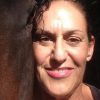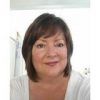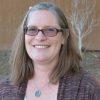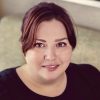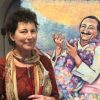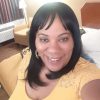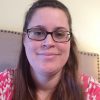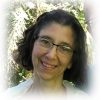
Douglas Lowell, Find A Cure Panel
I’m excited to be speaking today with Roberta Smith, president of Alagille Syndrome Alliance (ALGSA). Roberta, welcome.
Roberta Smith, president of Alagille Syndrome Alliance (ALGSA)
Thank you so much. I’m always eager to spread awareness about Alagille Syndrome and this is a great way to do that.
Douglas Lowell, Find A Cure Panel
Yes. Thank you. Roberta, can you first tell us what is Alagille Syndrome because most people are likely not familiar with it.
Roberta Smith, president of Alagille Syndrome Alliance (ALGSA)
Alagille Syndrome is an autosomal dominant genetic disorder that affects one to all organ systems. It’s extremely complex and can range from very mild to very severe cases, each person affected uniquely. It’s classified as a rare cholestatic liver disease, but it’s really much more than that.
Douglas Lowell, Find A Cure Panel
And when it is generally diagnosed? In children? Is it tested at birth? Or only after potential issues that demand testing?
Roberta Smith, president of Alagille Syndrome Alliance (ALGSA)
Alagille Syndrome is hopefully diagnosed at birth. As technology continues to expand we see more and more Alagille patients diagnosed early. However, Alagille syndrome can be tricky to diagnose as a whole syndrome because of the different organ involvement. Moreover, many children with Alagille syndrome have been and still are misdiagnosed with Biliary Atresia when they have the liver disease portion of the disease. Typically, a newborn with ALGS will present with jaundice and this gets the ball rolling on the diagnostic odyssey. Many times three characteristics must be identified in order to be clinically diagnosed and those are a combination of facial features, liver disease, heart defects, butterfly vertebrae, an eye anomaly, and/or kidney issues.
We are finding more and more adults getting diagnosed now due to their children or grandchildren being diagnosed. The history of diseases is interesting and fascinating, but equally frustrating when a cure is desperately needed.
Douglas Lowell, Find A Cure Panel
Interesting . . . so there’s no genetic test for it per se? It’s diagnosed by symptoms?
Roberta Smith, president of Alagille Syndrome Alliance (ALGSA)
There is, yes. It’s only now becoming more prevalent. This is a cholestatic liver genetic test to identify one of two genes that we know are involved in Alagille Syndrome, Jagged1 or Notch2.
We see young adults and older adults tend to have the clinical diagnosis and teens and young children, due to opportunity for genetic testing now versus then, have the genetic test results.
Once a genetic test provides the diagnosis, parents and even grandparents and extended family can be genetically tested. Sometimes their facial features and other involvement can be identified without the genetic test.
Douglas Lowell, Find A Cure Panel
Do parents know that they are carriers? When was Alagille Syndrome (ALGS) recognized as a disease? How far back does this tracking go?
Roberta Smith, president of Alagille Syndrome Alliance (ALGSA)
Alagille Syndrome was identified in 1969 by Dr. Daniel Alagille in France. Amazing what we are now learning about the disease.
Douglas Lowell, Find A Cure Panel
So someone, let’s say 40 . . . gets diagnosed with ALGS. What did they think they had before? Were they ever treated for some . . . unknown ailment before?
Roberta Smith, president of Alagille Syndrome Alliance (ALGSA)
Yes, someone in their 40’s might have Tetralogy of Fallot, let’s say. They might not present with heavy liver or kidney involvement and their facial features might be so mild they are not clearly identified. This person may go about their life not knowing they have Alagille syndrome until their liver disease progresses or kidney problems arise later in their life. This person may have lived never knowing they had the disease. Now, they may have a child with ALGS characteristics then their own involvement could be identified.
Douglas Lowell, Find A Cure Panel
Going back to children and diagnosis at infancy . . . . so if a child is diagnosed, what is the prognosis and treatment protocol? Take us through that journey.
It seems quite variable but let’s take a typical case.
Roberta Smith, president of Alagille Syndrome Alliance (ALGSA)
Yes, quite variable. Due to the very wide and highly misunderstood spectrum of variance in disease, the diagnosis at infancy can be quite different. Heavy liver, they may have a biopsy to determine whether they have BA or ALGS. Sometimes, they are misdiagnosed with BA and end up getting a major surgery called Kasai, done for BA patients. Later to be realized they had ALGS. If they have heart involvement they could have a series of different heart defects, Many times TOF or very narrowed vessels resulting in open heart or heart repairs. Through that process, they may realize there is also liver involvement or facial features and start working backwards to a diagnosis.
Douglas Lowell, Find A Cure Panel
I hear from what you’re saying that liver, heart and kidney can all be affected . . .
Roberta Smith, president of Alagille Syndrome Alliance (ALGSA)
It’s always our hope they start right off with a doctor who identifies the syndrome.
Yes. Liver, heart, kidney, vascular system, skeletal system, eyes, facial features, and more.
Douglas Lowell, Find A Cure Panel
How common is Alagille Syndrome? How many diagnosed cases estimated are there in US?
Roberta Smith, president of Alagille Syndrome Alliance (ALGSA)
There has never been an official study to measure the prevalence. One unofficial study suggested the prevalence was 1 in 30,000 live births. Approximately 2,000 – 4,000 patients in the US.
Douglas Lowell, Find A Cure Panel
And then how edified do you think pediatricians are to Alagille Syndrome? Would the average pediatrician know to consider this?
Roberta Smith, president of Alagille Syndrome Alliance (ALGSA)
Great question. To date, this has been very difficult to identify by pediatricians, however, more science equals more information out in the medical field and now, more than ever, we are seeing more science and research with ALGS than ever before.
Douglas Lowell, Find A Cure Panel
So crucial. Diagnosis and prognosis is crucial and we could talk for hours on that and we may come back to it . . . I want to segue to the great work you’re doing for Alagille Syndrome Alliance sometimes referred to ALGSA or “The Alliance” of which you are the President . . . take us back to the beginning. How did you get involved in that?
Roberta Smith, president of Alagille Syndrome Alliance (ALGSA)
I have twin daughters who will be 18 in November. One has ALGS. My involvement with the ALGSA started as a single mother overwhelmed, extremely fatigued, and looking to connect with other parents, anyone who I could relate to dealing with the same things. The ALGSA had a paper newsletter that was just a few pages but shared updates in science, talked about some of the doctors who were working in the field, had a birthday list for the children, etc. I called asking the founder if they might consider allowing me to write a personal column of our Alagille journey to bring that personal connection to the newsletter. I started writing this in 2005 and did so until about 2013. I became a board member in 2013 and I’ve never looked back. The Alagille families are amazing and their journeys inspiring and motivating.
Douglas Lowell, Find A Cure Panel
It’s inspiring that you used your experience as a platform to help the thousands of other families fighting this battle.
I believe that ALGSA is the only non profit working in this condition and you have a very large outreach and support within the ALGS families. Tell us about the loyalty and commitment that you’ve created by the AGLSA to accomplish this.
There are 25,000 plus diseases and many of them do not have a non profit/advocacy group with this type of loyalty.
Roberta Smith, president of Alagille Syndrome Alliance (ALGSA)
The ALGSA is the only 501c3 nonprofit patient advocacy organization working for Alagille Syndrome. We are a national nonprofit but our reach is global, serving over 85 countries. The loyalty and commitment that we’ve created has been hard work and many ups and downs through the years. More than ever, the ALGSA is a trusted hub for ALGS information, resources, science and research, and international outreach. Over the last 3 years, we’ve completely revamped the organization, added 11 new programs, are involved in numerous scientific projects, and continue to advocate on patient’s behalf in many ways. Consistency and action builds loyalty, and we’re always trying to improve on that year after year.
Douglas Lowell, Find A Cure Panel
Take me through some of the greatest hits of programs and initiatives that you would like to highlight, Roberta. Maybe 2 or 3 that you feel have the most impact and you want to make sure ALGS families are familiar with.
And feel free to share links to your site to make sure that families can find you.
Roberta Smith, president of Alagille Syndrome Alliance (ALGSA)
Our most engaged programs include our ALGS Financial Assistance, ALGSA Holiday Giving Tree Adoption program, ALGSAccess, ALGSAwareness, and ALGSAcademy. All of these having been started since 2018. Our financial assistance program was an urgently needed program. It’s been off the ground for just over a year and we’ve helped nearly 100 individuals with financial assistance, paying 3rd party bills like rent/mortgage, car note, utilities, and more. Our Holiday adoption program started with the 2020 holiday season and we gave around 20 families gifts. An outstanding program very well received. Our ALGSAccess program helps national and international families get assistance locating medications they need, combating insurance denials, social security and disability denials, and writes letters of support for a number of reasons to aid in areas of needed access.
ALGSAcademy is our education program that consists of podcasts, educational materials and resources. Lastly, ALGSAwareness is an advocacy program that provides everything a family or ALGSA supporter would need to share information or spread the word about ALGS through email and across their social media. There are ALGSA graphics, science spotlights, information bits, and more there.
Douglas Lowell, Find A Cure Panel
Thanks for comprehensive summary, Roberta. Very helpful and heartening how dynamic your programs are.
I want to conclude by talking about treatment and looking into the future.
I infer that there are surgery and potentially transplant options now for severe cases. There are two genes that you identified above. Are there targeted therapies being developed? What does the treatment landscape look like?
What are your dreams for treatment? What would you like to see 10 years from now?
Roberta Smith, president of Alagille Syndrome Alliance (ALGSA)
Liver transplant is quite common with ALGS. We also see some kidney transplants, heart transplants in rare cases, multiple organ transplants, and re-transplants. Surgeries can consist of heart repairs and other invasive cardiac surgeries, internal or external biliary diversions done to divert bile from the liver because of the severe itching that is associated with the liver disease of ALGS, g-tube placements, broken bone repairs, the list goes on and on. Currently, there are no approved therapies for Alagille Syndrome. However, there are two medications heading toward FDA approval to address the itching. We are thrilled with these two options and look forward to the days when they are both approved. Along with this, the ALGSA has partnered with NCATS/NIDDK and Travere Therapeutics in a 3-way CRADA agreement looking for the root cause of Alagille Syndrome in the liver. It’s a 3-year partnership currently in our 2nd year. There are also amazing scientists working in ALGS in liver, kidney, and more. We partner with scientists in every way we can and welcome them with open arms. Also, we partnered with Toronto Sick Kids to create the Global Alagille Alliance (GALA), a retrospective study on ALGS from ages 1-30, led by Dr. Binita Kamath, ALGS expert. So far we have over 1600 patient’s in the database, an amazing achievement.
Our hopes and dreams? Well, we like to say, “We hope our doors close one day due to finding a cure”. A quote our wonderful Executive Director, Cher Bork, started. And, it’s true. Nothing would make us happier than finding that cure. Until then, we will continue to work hard partnering in scientific projects, pushing for more investigation in areas unrealized, and work hard with unbelievable scientists who work on ALGS, sometimes never even seeing a patient. We want to open that science lab and invite any scientist to get to know us. We love to work with them and bring a lot to the table.
And finally, I’d really like to give a shout out to our wonderful Board including Shamy, Julia, Chris, and Mike, and our ALGS families who we love!
We can be found at: www.Alagille.org
Our Facebook site is: https://www.facebook.com/ALGSAlliance
Our Instagram is: https://www.instagram.com/algsalliance/
Douglas Lowell, Find A Cure Panel
Thank you so much for speaking with Conversations, Roberta. We’re very grateful for you time. You’re doing fantastic works with ALGSA and we know that will continue.


